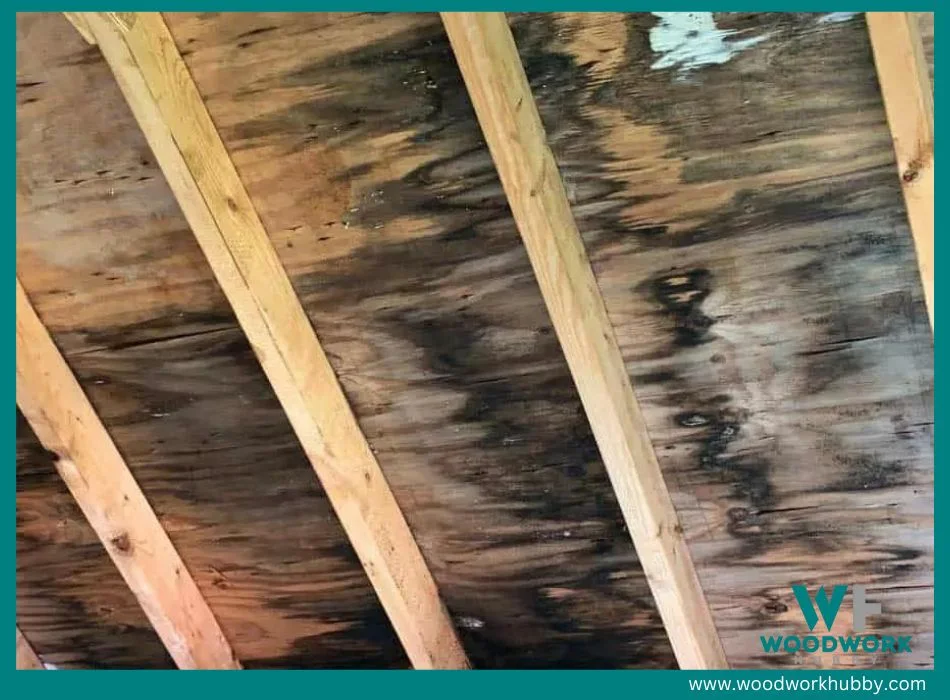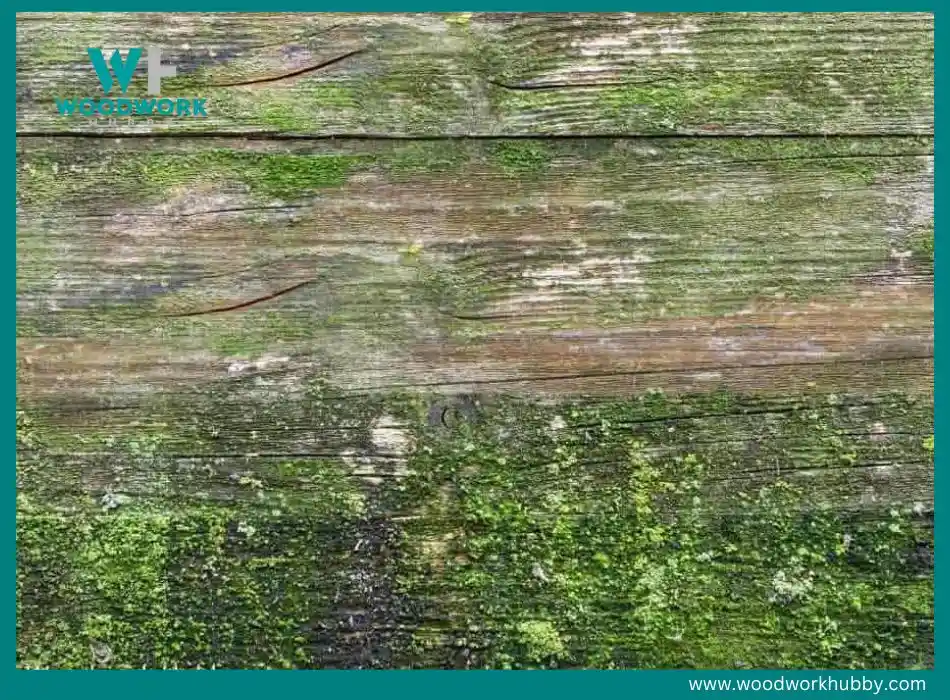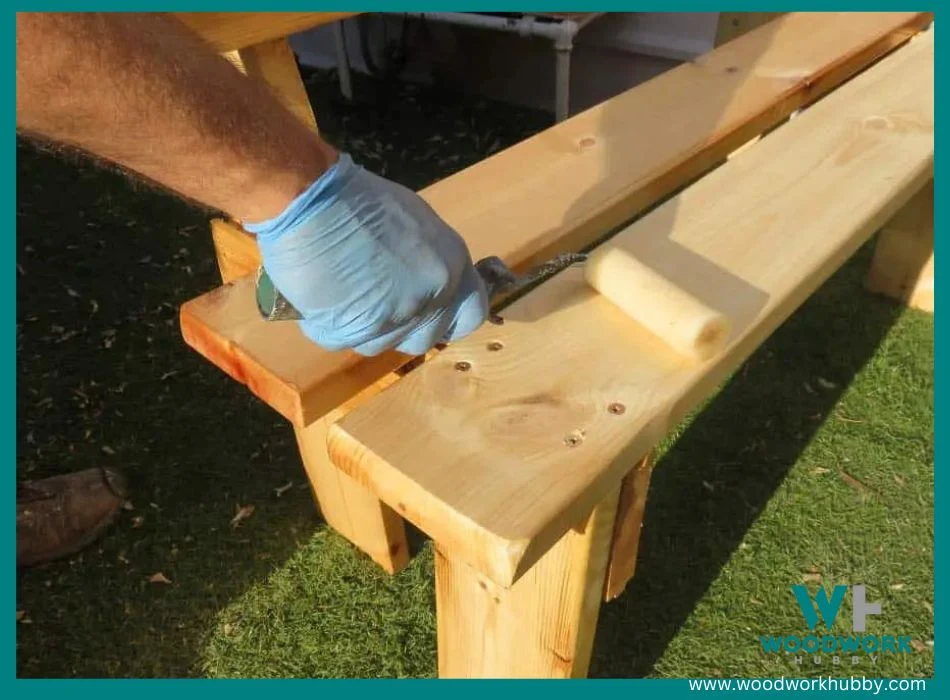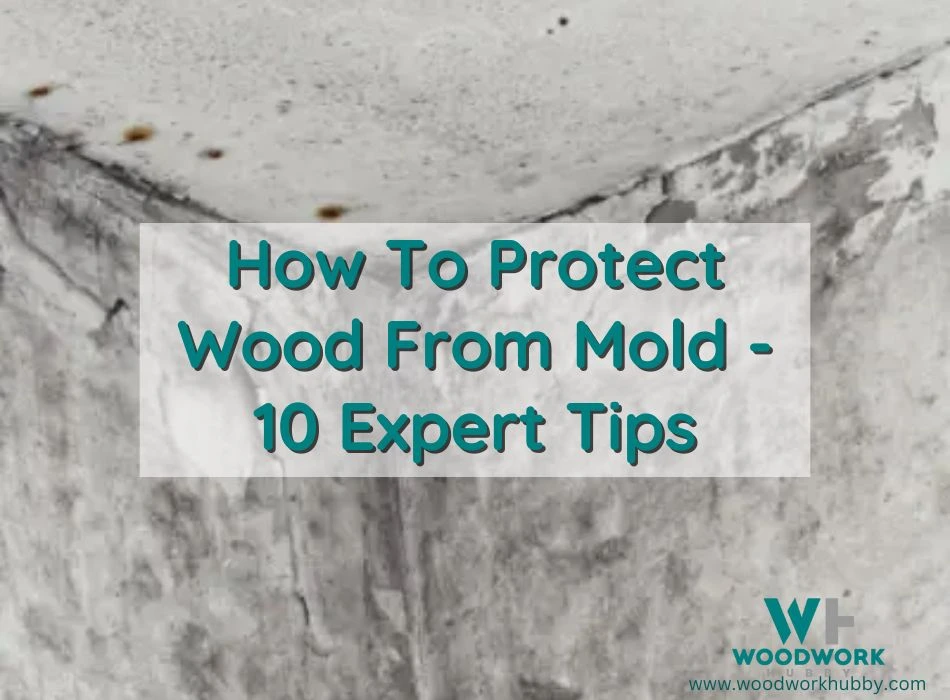Mold can ruin wood items, and seeing parts of your home or beloved wooden furniture suffering from mold damage can be devastating. Thankfully, some great products and useful tricks are available to help you get rid of mold for good.
The following sections will answer common questions like how do you protect wood from mold? and what should you do when you find evidence of mold?
You can protect wood from mold by ensuring it is finished, sealed, and protected by water and use a fungus repellent. Regular maintenance and proper care are some of the best ways to ensure mold does not grow and to prevent it from reoccurring.
This guide is intended for all skill levels and is designed to cover a wide range of possible wood products that might come in contact with mold. These expert tips can save time, money, and your property.
10 Expert Tips That Can Save Your Wood From Mold
Various molds can appear quickly or over time, indoors or outdoors, in dry heat and humidity. There are several ways you can make your wooden property safe against damage. There are a few ways you can work to keep your home protected from forming mold colonies.

You may have stumbled across a bit of mold on a piece of furniture or architecture, and now you are worried about how badly the wood has been damaged and what you can do to protect it.
Perhaps you know you live in an area prone to molds and want to take some preventative measures to keep your property safe before it can ever get a foothold.
The good news is that these ten tips can easily answer the question of how do you protect wood from mold.
Tip 1
Vacuum To Remove Mold Spores
Tip 2
Check For Moisture Spots and Mold
Tip 3
Sand Away Mold
Tip 4
Use The Correct Wood Sealer
Tip 5
Keep Space for Ventilation Between Walls and Furniture
Tip 6
Regularly Clean Wooden Outdoor Furniture
Tip 7
Clean Mold From Rough Cut Wood
Tip 8
Protect Smaller Wooden Items
Tip 9
Get Rid Of Clutter Around Your Home
Tip 10
Control Your Homes Environment
Let’s take at look at each of these in more detail to see how you can protect wood from mold.
1. Vacuum To Remove Mold Spores
Vacuuming is a useful tool for both mold clean-up if you notice an issue and as a preventative measure. When using this method, you will need to use a HEPA (High-Efficiency Particulate Air) vacuum because they have a filter that will actually capture mold spores.
A wet, shop, or standard vacuum without a HEPA filter could do more harm than good by capturing mold spores, not capturing them properly, and instead spreading them through the air.
If you have mold due to water damage, then a wet vacuum with a HEPA filter is best. For anyone living in an area high in humidity and with a high probability of mold infestation, it is best to simply get a personal HEPA vacuum which will save you time and money, so you do not have to rent one out repeatedly.
2. Check For Moisture Spots and Mold
Heating, ventilation, and air conditioning units are often a source of mold spread. This can be due to the machines themselves being contaminated or because they leave moisture spots that become breeding grounds for various molds.
You will want to regularly check-in and around HVAC units for signs of mold. If you notice mold inside the machine, then turn it off and ensure that it is thoroughly clean before restarting it.
For moisture spots in and around your HVAC unit or standard air conditioner, it is important to keep them clean. When possible, make adjustments so your machine does not cause that wet, damp, or humid spot.
For example, fix leaks or move them to an area with greater ventilation where humidity is less likely to sit and soak into the walls, furniture, or flooring.
Should you notice mold near your HVAC unit, pull furniture or rugs away from the area and thoroughly clean the area by scrubbing away the mold with detergent and water, then let it completely dry before returning your items to their previous places.
Some of the high moisture areas you want to check often for mold include the following.
- Showers, tubs, sinks, and below sinks
- Windows and doors
- Drain pans and humidifiers
- Bathroom ceilings and walls
3. Sand Away Mold To Remove It From Some Areas
For floorboards, siding, items like frames, or wooden furniture, you will want to act quickly if you notice any mold growing. First, you will want to follow the United States Environmental Protection Agency (EPA) guideline for mold removal, which involves creating a mixture of water and detergent to use for wiping away the mold and residue.
Many online tutorials recommend bleach and mold killer mixtures, but these may simply remove the visual signs of decay while leaving it alive inside the wood. Simple detergent and water are your best bet.
Water and Detergent Is The Best
For Removing Mold
Scrub until the mold is eradicated, then let it dry thoroughly. Once that is done, you can sand away areas that have been discolored or damaged by the mold. This has the added benefit of removing any remaining spores which may have survived. Sanding will also reveal if there is a deeper, more extensive colony that needs to be cleaned.
Once you have scrubbed and sanded the mold away, it is important to use a water-repellent sealant to ensure that the wood stays mold-free.
4. Use The Correct Wood Sealer or Water Repellent For Wooden Items
Areas like outdoor decks, patios, sidings, roofs, and wooden furniture are going to be prone to mold infestation if you do not use the proper preventative measures. There are many sealant options that are EPA registered and are both mold-resistant and water-resistant.
If you live in an area of the country with high humidity, then spraying wooden outdoor property with a fungicide coating after you use a sealant can add an extra layer of protection.
Always use the correct sealer for the type of wood and where you will be placing it. For example, if you are going to be finishing an outdoor deck, make sure the sealant is designed for exterior wood and that it is waterproofed and mold resistant.
Always read the instructions that come with your sealant, and when in doubt, reach out to a professional to get more information on the best product to protect your wood.
5. Keep Space For Ventilation Between The Wall and Wooden Furniture
Mold can easily transfer from the walls or floor to furniture. For anyone living in an area that is a prime mold breeding ground (e.g., high humidity, low ventilation, warmth, etc.)
One trick you can use to give our wooden furniture an added level of protection is to pull it out away from any walls to create a ventilated area between them where mold spores will have a harder time jumping the space.
This also provides you with easier access to visually check over and clean your wood items more often as a preventative measure.
It can be helpful to make sure you have good air circulation throughout the entire house. This can be accomplished with fans or open windows. However, if you end up leaving doors or windows open, make sure it is not too damp outside; otherwise, you may be letting in moisture and doing more harm than good.
6. Regularly Clean Your Wooden Outdoor Furniture

Probably the most useful tip on this list is the idea of regularly cleaning outdoor furniture. This applies to indoor furniture as well, but molds are much more likely to grow quickly outdoors, so it is vital that you are following a cleaning schedule to check for, remove, and protect against mold.
For outdoor furniture that is kept in the shade, you can dry-scrub it, wet scrub with water and detergent, and then move out into direct sunlight if it will not become fully dry in its current location.
Siding, outdoor flooring, and other larger areas should be sprayed down regularly and scrubbed where there are any signs of mold growth and then thoroughly dried.
7. Clean Mold From Rough Cut Wood With EPA Approved Formulas
Rough wood will have no protective layer to keep out the mold which means that the colony will be able to burrow much deeper into the wood. Water and detergent or an EPA-approved fungicide formula can help kill and cleanse the rough wood by seeping down to get all the areas touched by mold.
Once it has been scrubbed, you will need to thoroughly dry it to ensure mold spores do not latch onto the moisture caused by the cleaning to regrow.
You can find EPA-approved formulas online or at your local hardwood store. These can be used as both a way to remove mold and a preventative measure when regularly cleaning your wooden property.
8. Protect Smaller Wooden Items From Mold
Picture frames, wooden figurines, and other smaller items still need to be protected from mold. These are often left in one place for a long period of time, and often this is near windows, walls, and corners where mold is most likely to grow and spread.
The easiest way to keep them from developing mold is to regularly clean and inspect them. This may be tedious and time-consuming if you have a lot of wooden nick-nacks, but it will protect them.
9. Get Rid Of Clutter Around Your Home
Clutter will both provide easy road access between items for mold and hide signs of mold until it is established. Clutter near walls, windows, HVAC units, and corners is especially dangerous because mold can become fully entrenched by the time you notice it.
Keeping those areas clear of items and making sure there is room for ventilation will make a significant difference in your ability to spot problem areas and stop the spread of spores. Clutter near your doors (e.g., shoe racks, toys, bikes, etc.) can also be problematic since it may stop the area from getting completely dry, which can lead to mold growth.
10. Control Your Home’s Environment
There are a number of ways you can control your home’s environment to discourage the growth of mold. They include the following.
- Keep humidity level below 50%
- Fix leaks as soon as you notice them
- Keep the air-ventilated throughout the home using fans, open windows, or other measures
- If you experience an issue involving water, dry the interior of your home as quickly and thoroughly as possible
- If you intend to paint any area of your home, make sure to add mold inhibitors to the paint first
- Use approved mold-killing formulas in your bathroom
- If a carpet or other large fabric is soaked, it is best to entirely remove it from the area until it can be cleaned and dried or replace it if that is not an option
Wear Protective Gear
Before you start cleaning up any moldy areas, it is important to suit up properly to protect yourself. The best way to keep your lungs protected is by wearing an N-95 respirator and ensuring that it is properly fitted to your face so there are no areas where airborne mold can leak in.
Always do your best to avoid touching mold with your bare hands, and since you will be working with liquid solutions to get rid of it, gloves that reach your mid-arm are best. To avoid getting mold spores in your eyes, it is best to wear goggles that do not have ventilation holes.
Keep your feet covered while cleaning. You can find all of these items at your local hardware store or online.
If you have serious allergies, respiratory issues, or health-related problems that might cause a severe reaction to mold, then it is best to get someone else to do the clean-up, even if you have protective gear.
Accidents happen, and your health is essential. You could also call local experts who can come in, appraise the situation, and clean up for you using their expert tools.
How Mold Can Affect Your Health
Many people are unaware of how dangerous molds can be if left untreated. Anyone with a respiratory illness or mold allergy will be at a higher risk of serious side effects from mold invading their home. Sensitivities, allergies, chronic conditions, and infections can all cause adverse reactions up to and including the following.
Mold Can Cause Serious Health Issues If Left Untreated
- Chest and nasal congestion
- Coughing, sneezing, and difficulty breathing
- Sore throat
- Watering, dry or sore eyes
- Skin irritation
- Headaches
- Pulmonary fibrosis (scarring in the lungs)
- Cancer
- Pulmonary bleeding
- Immune and blood disorders
- Liver and kidney conditions
- Neurotoxicity (toxic nervous system)
- Pregnancy conditions
- Digestive and heart conditions
Recognize Common Molds Found On and Around Wood

Wood absorbs water easily, which means it is the perfect place for molds to call home. There are three main categories of mold, and they are based on the color of the mold, which can be black, white, or green.
There are many types that can make a home in your floor, ceiling, or furniture, but the ones we have mentioned below are the most common. We have given a brief description of each and how it can cause problems.
- Acremonium: You generally find this mold growing within humidifiers, HVAC units, cooling coils, drains, and windows. It is often light-colored (e.g., pink, grey, orange, or white) and can sometimes grow with Stachybotrys. This mold is a highly dangerous carcinogenic that can cause immune system, brain, bone marrow, and lung issues.
- Alternaria: Often found in showers, tubs, sinks, or other damp areas, this mold is dark green with brown “hairs.” It is allergenic that can cause asthma-like symptoms and can infect the respiratory tract, mouth, and nose.
- Aspergillus: This is the most common household mold and comes in a variety of colors and textures. The effects it can have will be dependent on where it is growing and the variety. However, it can be carcinogenic with common side effects, including asthma attacks, respiratory and lung infections.
- Aureobasidium: You will most often find this mold growing behind wallpaper or on painted wooden objects. It can be brown, black, or pink, and the older it is, the darker the color will become. It is allergenic that can cause skin and eye infections.
- Chaetomium: Most common in water-damaged areas, this mold starts out gray and then turns brown and finally black. It is often found near leaks, sinks, and in basements. It can cause serious side effects for people with chronic illnesses, but for healthy individuals, it usually leads to skin conditions.
- Cladosporium: This mold loves fabric. It is vital to keep an eye out for it with furniture that is wooden framed with fabric (e.g., couches, chairs, etc.), and it can also be found under floorboards and inside cupboards. Olive green or brown in color; it is soft and short. You should stay away from it and call a professional if you encounter this mold, as it can cause allergic reactions, lung infections, and skin conditions.
- Stachybotrys: One of the most dangerous molds on the list, Stachybotrys can cause a whole host of severe health problems if left to grow. It is a greenish-black colored mold often caused by water damage or high humidity. This mold is known to cause bleeding in the lungs of infants and small children. If you notice it or believe you may have Stachybotrys in your home, then stay away from it and call an expert immediately.
Some other molds that you may encounter include the following.
- Trichoderma
- Ulocladium
- Fusarium
- Mucor
- Penicillin
How Do You Protect Wood From Mold?
Wood should be cleaned and kept dry where possible to prevent mold from growing.
Now that you have a better idea of how to keep your house mold-free and how to identify and clean mold when it does appear, you will want to look at ways to protect your wood from growing these spore colonies.
Below are a few of the different preventative steps you can take to ensure that your wooden items remain mold-free and undamaged.
Does Painting Wood Prevent Mold?
Painting wood does not prevent mold from growing. Paint with mold inhibitors is good for slowing down mold growth but if the environment is right for mold, it will continue to grow.
Once mold has set in, painting over it will do no good. The paint will peel away, and the mold will continue to grow.
There are mold-killing and fungus-resistant primers and paints that you can use for indoor and outdoor furniture. These are excellent preventative measures but do not guarantee that individual molds like aureobasidium will not try to grow on them. Using these paints should be combined with frequent cleaning and mold checks.
What Can You Put On Wood To Prevent Mold?
There are several things you can put on wood to make it an unfriendly environment for mold. EPA-approved fungicide sprays, sealants, and paint additives can all keep your wood healthy for longer. These mold remediation products can be found at your local hardwood store.
Does Varnish Protect Wood From Mold?

Varnish will help prolong the length of time before mold starts to grow on your furniture. The varnish is a good protective layer that can potentially keep it from becoming infected with certain molds. Varnish must be applied to a clean and contaminant-free wood that is fully dry.
Adding varnish to a piece of wood that is damp or already harboring mold spores will not do anything except trap that moisture inside. Then it is safe to use primer or varnish.
How To Prevent Mold On Wood Furniture?
Moisture control is going to be the biggest preventative when it comes to keeping your wood furniture from molding. If they get wet from unexpected water damage, a soaked dog, a spilled drink, or any other source, then it is vital to clean and thoroughly dry the furniture as quickly as possible.
If you notice mold on a piece of wooden furniture, you can keep it from spreading to other pieces by cleaning it outdoors where the spores will not travel and land on other wooden things.
A Good Clean 3-4 Times A Year Will Dramatically Prevent Mold Growth
You should clean and dust all areas on and around your wooden furniture at least every few months. Three to four times a year should be enough for you to prevent mold growth and quickly catch it if it does start to take root. This will give you a chance to get it eradicated before permanent damage can be done.
Indoor Versus Outdoor Mold Protections
There are a few differences in the way that indoor and outdoor wooden items are protected against possible mold. This is because they are very different environments, and the wood used may be quite different as well.
Indoor Preventative Measures
Control as much of the indoor environment as possible. We have already mentioned increasing airflow and decreasing humidity and protecting your home from airborne spores that may be hiding inside AC or HVAC units.
You should also use a protective coat of mold-resistant primer on indoor items and keep them dry. You can add wooden furniture and fixtures to your regular cleaning schedule to give them a once-over and remove any potentially harmful growth.
Outdoor Preventative Measures
Unfortunately, it is impossible to control the weather, which means outdoor wooden projects and structures are going to be subjected to a much higher risk of mold.
One way to improve protection for outdoor wooden items is by making sure they are covered in a layer of protective, mold-resistant paint and sprayed with a fungicide every few months. You should also be cleaning and drying outdoor furniture, flooring, and siding on a regular basis.
Protecting Wooden Furniture That Is Being Stored
If you need to store wood furniture, there are a few steps you can take to keep them clear of mold until you can get them out of storage.
Step 1
Choose a climate-controlled storage unit that will provide air circulation and temperature control.
Step 2
Do not store wood items with other items that may be harboring mold (e.g., fabrics, cleaning rags, clothes, etc.)
Step 3
Check the humidity and make sure it is below 50% and if it is high, check for leaks.
Step 4
Check your items regularly. Making sure yourself or someone else visually checks the storage unit and items in it for possible mold three to four times a year will let you spot things before they become a real problem. When checking over the unit, make sure no recent leaks have developed, that the humidity is still below 50%, and that there are no signs of mold.
Knowing When To Replace The Wood
Sometimes no matter how hard you try, the wood is simply too damaged for you to repair it. However, it can be tricky to determine when you should not waste your time, energy, or money trying to fix the issue. Here are a few ways to recognize when it is time to replace the wood.
- Very porous materials will tend to have mold hidden throughout them, so they are much harder to thoroughly clean.
- If you are uncertain and want to do everything possible to keep the item, it is best to consult a local professional who can assess and provide information on steps you can take. They will be able to recognize if there is no way to salvage the item.
Additional Resources
You can find out more information about mold clean-up and official procedures on the following websites.
- The United States Environmental Protection Agency website https://www.epa.gov/mold/brief-guide-mold-moisture-and-your-home
- Centers For Disease Control and Prevention https://www.cdc.gov/mold/control_mold.htm




